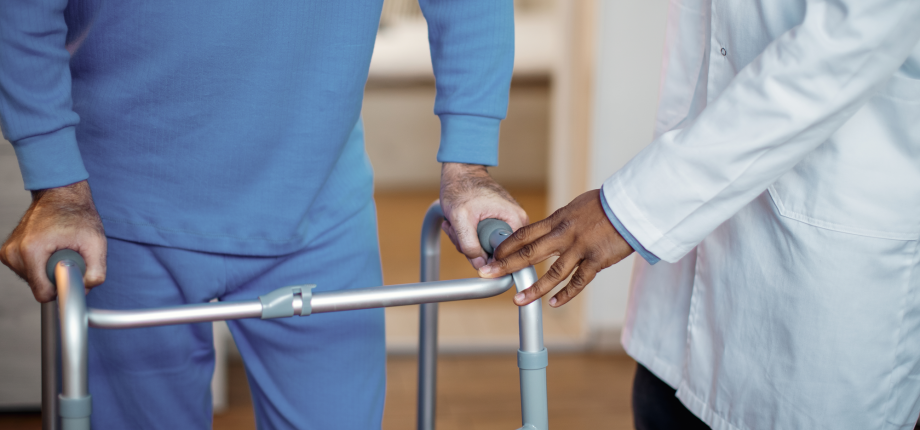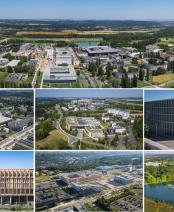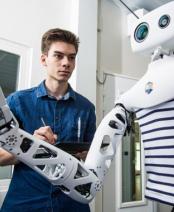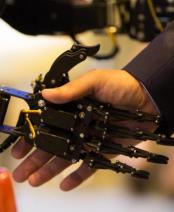Neurological diseases: when AI measures gait abnormalities

What if artificial intelligence could help patients with neurological disorders (stroke, Parkinson's disease, multiple sclerosis, etc.) or trauma affecting their motor skills to regain their ability to walk? During his thesis at the SAMOVAR laboratory, Lorenzo Hermez focused on how machine learning methods could innovate and inform practitioners in their therapeutic choices.
The young doctor focused in particular on botulinum toxin injections, which reduce muscle spasms and improve walking. “This technique is still quite experimental. Clinicians rely solely on their experience to determine the necessary doses and target areas. Machine learning therefore becomes a valuable decision-making tool,” says Lorenzo Hermez. The same is true for certain drug treatments for Parkinson's disease, the effects of which were also studied during this thesis.
Walking: not such a simple process
To get to this point, it was first necessary to qualify and quantify walking from a mathematical and numerical point of view, starting with normal walking. The latter is the result of a complex process that is acquired throughout life and exhibits significant variability that also needed to be defined. However, until now, the literature had not considered this parameter. The data was standardized and described only one type of normal walking.
Lorenzo Hermez therefore studied walking cycles of different lengths: those of students, staff, and practitioners at the Coubert Rehabilitation Center (77) - a partner institution of SAMOVAR for his thesis. Using cameras and sensors focused on their lower limbs, he collected numerous signals on the angular kinematics of their ankles, knees, hips, etc. “Using mathematical tools, we analyzed these cycles based on data from common measurement points on these individuals' joints. Processing this data using machine learning and a specific algorithm enabled us to identify three main data groups, representing three normal walking profiles,” explains Lorenzo Hermez.
Quantifying pathological walking
By applying this technique to patients with paraparesis or tetraparesis (editor's note: incomplete muscle weakness in two or four limbs), it becomes possible to interpret the signals related to their walking in relation to the established reference model. The researchers derive a score that quantifies the distance between these signals and the three normal profiles. “We also noticed that in cases of hemiparesis (muscle weakness on one side of the body), these scores provided valuable clues about the affected limb and its pathological deterioration,” adds the researcher.
In a second step, Lorenzo Hermez transformed these signals into images containing more information. "We constructed dissimilarity maps that provide information on the distance between two signals in both time and space. They offer a more complete and accurate view of walking, particularly how it evolves on one side compared to the other (a bilateral visualization). This is not possible with raw data processing. In general, images are more interesting because they are easier to interpret for the human brain, but also for computers." Thus, with the help of other mathematical tools, the dissimilarity maps were also used to establish a global model of normal walking and then to determine and quantify characteristic deviations in pathological walking.
During his thesis, Lorenzo Hermez also demonstrated that this method was applicable to other databases. “We were able to quantify the risk of falling in patients recovering from a stroke. We also looked at signals from people with Parkinson's disease and measured gait freezing using dissimilarity maps.”
Although Lorenzo Hermez's work does not yet offer clinical support, it can help practitioners gain experience. This enables them to make better diagnoses and to better evaluate and adapt treatments. All of this can be done more quickly.
NB: this publication is part of the DaTSHealth project (ANR-CMAS-0033).

Lorenzo Hermez holds a PhD in data analysis and artificial intelligence for humans from Télécom SudParis (Institut Polytechnique de Paris). His work focuses on developing machine learning methods for characterizing human movement and assessing neurological motor disorders. Passionate about research at the interface between AI, health, and biomechanics, he works closely with the clinical community to design interpretable and useful diagnostic tools. He is currently continuing his research at INRIA Lille on clinical data analysis for personalized medicine.
>> Lorenzo Hermez on Google Scholar
>> Lorenzo Hermez on SAMOVAR's website
*SAMOVAR: a research lab Télécom SudParis, Institut Polytechnique de Paris, 91120 Palaiseau, France














